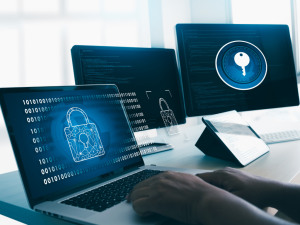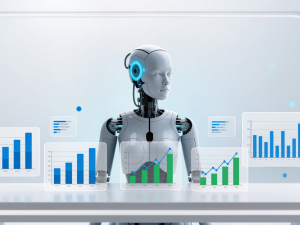Hands-on skills have become the center of IT learning. Students aren’t judged by how well they memorize a concept anymore, they’re judged by how quickly they can configure a firewall, deploy a cloud instance, secure a system, or troubleshoot a broken network. Traditional classrooms couldn’t always give that level of practice, and physical labs were too costly, limited, or difficult to scale.
Virtual labs changed that. They made real IT environments accessible anytime, anywhere, giving students a place to experiment, break things safely, and build confidence through practice rather than theory. For instructors, this shift opened up a completely new way to teach one where lessons aren’t just explained, they’re applied instantly through realistic simulations.
This blog explores how instructors are using virtual labs to prepare future-ready IT students, the teaching methods these labs make possible, and the skills learners actually gain from this hands-on approach. We’ll look at what’s working, why it matters, and how virtual labs are shaping the next generation of cybersecurity, cloud, and networking professionals.
How Are Instructors Using Virtual Labs to Teach the Next Generation of IT Professionals?
Remote Access That Mirrors the Real IT Workplace
Instructors now use cloud-based virtual labs to give students round-the-clock access to full technical environments. Whether a learner is at home, on campus, or travelling, they can log in and practice on real operating systems, networking tools, and cloud platforms. This mirrors the way modern IT teams actually work distributed, flexible, and asynchronous. Students learn to troubleshoot and configure systems without being tied to a physical classroom, which builds independence and digital fluency.
Risk-Free Hands-On Practice
One of the biggest advantages instructors rely on is the safety of virtual labs. Students can break configurations, mismanage permissions, reboot systems incorrectly, or try risky commands all without damaging real hardware or interrupting live servers. This gives instructors the freedom to design exercises that reflect real industry incidents, something traditional computer labs could never safely support. Students learn by doing, not by imagining how something should work.
Exposure to Industry-Level Tools
Virtual labs also let instructors expose students to tools and environments that would otherwise be too expensive or complex for institutions to maintain. High-end routers, enterprise firewalls, Azure resources, AWS deployments, Linux server clusters all of these become accessible through simulation. This gives learners a realistic sense of the technology stack they will face in modern IT roles, without the financial burden of building physical labs.
Learning Through Real Scenarios, Not Just Instructions
Teachers are increasingly building scenario-based exercises where students solve problems instead of simply following steps. Instead of “configure a network,” students might face situations like:
- a misconfigured DNS server
- a ransomware-infected machine
- a cloud instance with incorrect permissions
- a network suffering from bottlenecks
This approach forces learners to think like actual IT professionals. They diagnose. They analyze. They test. They make mistakes and then correct them. Instructors also add gamified elements, like timers and scoring, to make practice more engaging and competitive.
Personalized Skill Development Through Analytics
Virtual labs track how long students take to complete tasks, where they struggle, what errors they repeat, and how their performance changes over time. Instructors use this data to understand skill gaps and tailor the next set of exercises accordingly. Instead of teaching everyone the same way, they focus on the areas where each learner genuinely needs support. This creates a teaching model that feels far more customized and responsive than traditional lab sessions.
Seamless Integration With Coursework
Because most virtual labs plug directly into LMS platforms, instructors can assign lab tasks right alongside readings, quizzes, and lectures. This ensures theory and practice happen together not in separate, disconnected sessions. Students immediately apply whatever they’ve just learned, which boosts retention and helps concepts stick.
What Skills Do Students Actually Build Through Virtual Labs?
Students aren’t just clicking through simulations, they’re developing skills that translate directly into real IT roles. Virtual labs strengthen the core abilities employers expect, while also shaping the kind of thinking required to operate in fast-changing tech environments.
Students Build True Job-Ready Technical Skills
Virtual labs replicate real work conditions, so students practice the same tasks they’ll perform in helpdesk, cybersecurity, cloud, or networking roles. They learn how to configure servers, secure endpoints, deploy cloud resources, manage users, monitor networks, and troubleshoot errors from start to finish. These aren’t theoretical exercises; they mirror the daily responsibilities of IT professionals, which makes the transition from classroom to workplace far smoother.
Critical Thinking Becomes a Natural Part of Learning
Because virtual labs place students in problem-solving environments, every task forces them to analyze, priorities, and make decisions. A misconfigured firewall, a broken route, or a compromised account becomes a puzzle they must decode. Instead of memorizing procedures, students learn why systems behave a certain way. This nurtures stronger analytical thinking and helps them become the kind of adaptable professionals the industry relies on.
Hands-On Experience Improves Knowledge Retention
When students actually do the work instead of just reading or listening information sticks longer. Virtual labs take advantage of this by turning abstract concepts into physical practice. Whether it’s building a cloud architecture or patching a vulnerable system, hands-on repetition makes knowledge more durable and practical. Many instructors report that students become more confident and more willing to ask deeper questions once they’ve seen the concepts come alive.
Adaptability Becomes a Built-In Skill
Tech environments evolve constantly, and virtual labs teach students to stay comfortable with change. Every new lab exposes them to a different interface, a new feature, or a modern tool they haven’t used before. Over time, they develop the mindset to explore, experiment, and learn independently an essential skill for any IT career.
Better Preparation for Certification and Real-World Assessments
Because virtual labs simulate real tasks, students gain an edge in performance-based certification exams. They practice troubleshooting under pressure, completing timed tasks, and thinking through multi-step problems all of which mirror the structure of leading IT industry exams. This creates both competence and confidence, giving learners a strong foundation before stepping into higher-level studies or professional roles.
Why Are Virtual Labs Becoming a Game-Changer in IT Classrooms?
Virtual labs are reshaping how instructors teach and how students learn because they solve some of the biggest limitations of traditional IT education. Instead of relying on limited hardware, outdated systems, or theoretical explanations, classrooms now have access to fully interactive, real-world environments that scale effortlessly.
They Remove the Biggest Barrier: Hardware Limitations
Physical labs are expensive to build and even harder to maintain. Servers age, networking gear becomes outdated, and replacing hardware can take years. Virtual labs eliminate this dependency. Instructors can launch up-to-date environments instantly, ensuring students work with modern tools and technologies rather than legacy systems that no longer reflect the industry.
They Transform Theory into Immediate Practice
IT concepts often look simple on slides but become much more complex during real implementation. Virtual labs bridge that gap by allowing students to move straight from explanation to execution. Whether they’re configuring a cloud environment or troubleshooting a security breach, the learning becomes active, not passive and that shift dramatically improves skill development.
They Support Classrooms of Any Size Without Limits
A physical lab can only accommodate a certain number of machines. A virtual lab can accommodate an entire batch, an entire department, or even an entire institution. Every student gets their own environment, meaning no more sharing systems, waiting for hardware to free up, or competing for lab time. This creates equal learning opportunities for everyone in the class.
They Enable Real-World Scenarios That Would Be Too Risky to Run Live
Activities like attacking a vulnerable server, misconfiguring a router, running penetration tests, or simulating system failures may be unsafe or impossible inside a live institutional network. Virtual labs allow these scenarios to run safely, giving students exposure to realistic failures and cybersecurity threats without risking actual infrastructure.
They Keep Students More Engaged and Motivated
A hands-on environment naturally creates curiosity. Students experiment more, explore more, and take ownership of their learning. When an action produces an immediate result whether success or failure it creates the kind of feedback loop that keeps engagement high. Instructors often find that even quieter learners become more active when lab work is involved.
They Allow Instructors to Modernize Their Teaching Without Extra Overhead
Virtual labs integrate smoothly with LMS platforms and existing curriculum plans. Instructors don’t need to set up physical devices, manage configurations, or troubleshoot hardware; they simply launch environments and focus on guiding students. This frees up time for discussion, mentoring, and deeper learning instead of technical housekeeping.
How Do Virtual Labs Help Build Future-Ready IT Students?
Virtual labs help students develop the exact mindset and skillset today’s tech industry demands. Instead of just memorizing commands or learning concepts in isolation, students train in environments that mimic the real workplace with all its complexity, unpredictability, and pressure to solve problems fast.
They Build Practical, Job-Ready Skills from Day One
Modern IT roles expect hands-on confidence. Whether it’s cybersecurity analysis, network configuration, cloud deployment, or troubleshooting, employers look for candidates who can do the work, not just talk about it. Virtual labs give students repeated exposure to real tools, real systems, and real issues. By the time they apply for jobs, they’re not learning these tasks for the first time; they’ve done them dozens of times.
They Strengthen Critical Thinking and Decision-Making
Real IT environments rarely follow a script. Systems behave unpredictably, errors pop up without warning, and solutions aren’t always obvious. Virtual labs put students in these situations deliberately. They learn how to diagnose faults, investigate logs, isolate problems, and make decisions with incomplete information the same way professionals operate on the job.
They Improve Retention Through Active Learning
Hands-on learning forces the brain to stay engaged. When students interact with the material spinning up a VM, auditing security settings, configuring a firewall they remember concepts better than they would through lectures alone. This deeper retention becomes especially valuable when preparing for certifications or job assessments.
They Build Adaptability in a Constantly Changing Tech Landscape
Technology evolves quickly. Tools change, updates break old processes, and new platforms emerge overnight. Students who regularly use virtual labs learn to adapt because they’re constantly exposed to new interfaces, updated software, and changing scenarios. Adaptability becomes a natural part of how they approach IT problems.
They Boost Confidence Ahead of Certifications and Job Interviews
Confidence plays a huge role in IT performance. When students practice repeatedly in simulated environments, they know what to expect when they face real systems. Certification exams, especially performance-based ones, become less intimidating. Job interviews become easier because students can talk about what they’ve done, not just what they’ve read.
They Create Industry Alignment Without Needing Costly Infrastructure
Virtual labs align student training with current industry tools, cloud consoles, security dashboards, networking equipment, and more without requiring institutions to invest in expensive hardware. This ensures that students learn skills relevant to today’s job market, even in schools or colleges where budgets are limited.
Conclusion
Virtual labs have changed the way IT students learn. Instead of memorizing commands or watching demonstrations, they get to practice inside real environments configuring networks, securing systems, deploying cloud services, and solving problems as they unfold. This kind of learning builds confidence, sharpens technical judgment, and prepares students for workplaces that expect hands-on ability from day one.
This is exactly why Ascend Education integrates virtual labs into its IT and cybersecurity courses. Every learner gets access to realistic simulations that mirror the systems used in the industry, whether they’re preparing for certifications in networking, cloud, or security. It turns theory into action, and action into job-ready skill.
Future-ready IT talent isn’t built through passive lessons. It’s built through practice, repetition, and environments that let learners explore, make mistakes, and grow, which is precisely what Ascend Education’s virtual labs are designed to deliver.
FAQs
1. How do virtual labs support effective IT learning?
They give students hands-on experience with real tools and systems, helping them apply concepts immediately instead of only learning them in theory.
2. Are virtual labs better than physical hardware?
They serve different purposes. Physical labs offer tactile experience, but virtual labs allow unlimited practice, resets, safe experimentation, and access from anywhere making them more practical for most IT programmes.
3. What skills do students develop through virtual labs?
Problem-solving, troubleshooting, system configuration, security auditing, cloud deployment, and real-world diagnostic skills.
4. Can virtual labs improve certification performance?
Yes. Repeated practice in simulated environments helps students feel prepared for performance-based exams like Security+, Network+, and cloud certifications.
5. How do instructors track student progress in virtual labs?
Most virtual lab platforms include analytics dashboards that show task completion, errors, time spent, and skill mastery giving instructors a clear view of each student’s performance.






